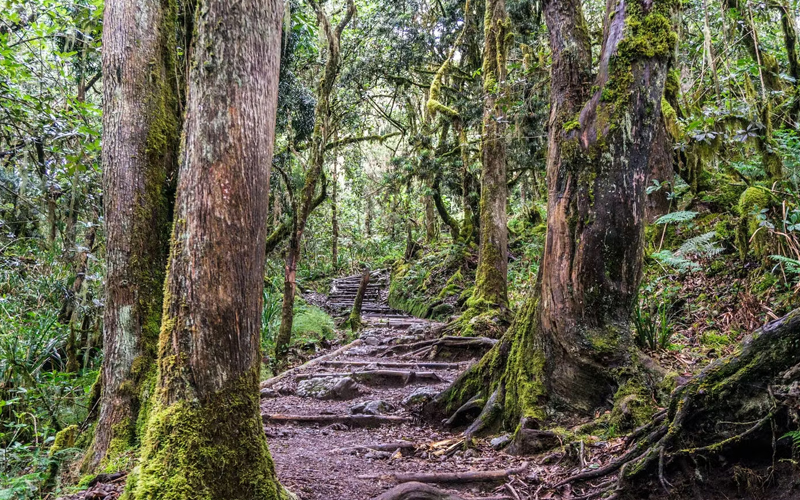Best trekking destinations in Tanzania 2025
Tanzania is globally renowned for Mount Kilimanjaro, the towering giant of Africa. But beyond the legendary peak lies a wealth of trekking adventures that showcase the country’s diverse landscapes, vibrant ecosystems, and cultural heritage. Whether you’re an experienced trekker or a beginner looking for an exciting challenge, Tanzania in 2025 offers a plethora of trekking options beyond Kilimanjaro.
Why Choose Tanzania for Trekking?
Tanzania’s trekking trails are diverse and immersive. From lush rainforests and volcanic craters to alpine deserts and savannahs, the country offers unparalleled variety. Many of these trails allow trekkers to explore remote areas, encounter unique wildlife, and interact with local communities, providing an adventure that goes beyond the typical safari experience.
Top Trekking Destinations Beyond Kilimanjaro
1. Mount Meru
The Little Brother with a Big Heart
- Elevation: 4,566 meters (14,980 feet)
- Why Visit? Located in Arusha National Park, Mount Meru offers stunning views of Kilimanjaro, a chance to spot wildlife like giraffes and buffalo, and a challenging trek for experienced hikers.
- Best Time to Visit: June to February, with the clearest views from December to February.
- Highlights:
- A crater rim hike with breathtaking views.
- Wildlife encounters on the lower slopes.
2. Ngorongoro Highlands
Trek Through a Cultural and Natural Wonderland
- Why Visit? The Ngorongoro Conservation Area offers a blend of Maasai culture and dramatic landscapes. Trekking here takes you through lush valleys, volcanic craters, and traditional villages.
- Best Time to Visit: June to October.
- Highlights:
- Trekking to Empakaai Crater, known for its flamingo-filled lake.
- Exploring the dramatic Olmoti Crater and its waterfalls.
- Visiting Maasai bomas for an authentic cultural experience.
3. Usambara Mountains
The Green Jewel of Tanzania
- Why Visit? Known for its lush greenery, cool climate, and biodiversity, the Usambara Mountains are perfect for nature lovers. This off-the-beaten-path destination offers moderate treks through forests and local villages.
- Best Time to Visit: Year-round, with the dry season (June to October) being ideal.
- Highlights:
- Hikes to panoramic viewpoints like Irente Viewpoint.
- Exploring small, eco-friendly villages.
- Birdwatching opportunities.
4. Udzungwa Mountains
Trekking Tanzania’s Eastern Arc
- Why Visit? Udzungwa Mountains National Park is a paradise for biodiversity. Its trails lead through tropical rainforests, home to endemic primates and waterfalls like the spectacular Sanje Falls.
- Best Time to Visit: June to October.
- Highlights:
- Trekking to Sanje Waterfalls for a refreshing dip.
- Spotting rare species like the Iringa red colobus monkey.
5. Ol Doinyo Lengai
The Mountain of God
- Why Visit? Ol Doinyo Lengai, an active volcano in northern Tanzania, offers a unique trekking experience. It’s the only volcano in the world that erupts natrocarbonatite lava.
- Best Time to Visit: June to October.
- Highlights:
- Nighttime treks to the summit to witness sunrise over Lake Natron.
- Exploring nearby Lake Natron, known for its vibrant pink flamingos.
6. Mahale Mountains
Pristine Wilderness and Chimpanzee Encounters
- Why Visit? Nestled on the shores of Lake Tanganyika, the Mahale Mountains offer a unique trekking experience combined with the opportunity to track wild chimpanzees.
- Best Time to Visit: June to October.
- Highlights:
- Trekking through dense forests to spot chimpanzees.
- Relaxing by the pristine beaches of Lake Tanganyika.
7. Pare Mountains
Serene and Untouched Trails
- Why Visit? The Pare Mountains, located near Kilimanjaro, provide quiet, less-tourist trekking routes. These trails are ideal for exploring local life and enjoying spectacular views.
- Best Time to Visit: June to October.
- Highlights:
- Trekking to Kindoroko Forest for birdwatching.
- Visiting traditional Pare villages.
Trekking Tips for Tanzania in 2025
1. Choose the Right Trek for Your Fitness Level
Some treks, like Mount Meru or Ol Doinyo Lengai, are physically demanding, while others, like the Usambara Mountains, are more moderate. Research the trial difficulty before you decide.
2. Pack Smart
Essential items include:
- Sturdy hiking boots.
- Layered clothing for varying temperatures.
- Rain gear, especially for forested areas.
- Water bottles and purification tablets.
3. Hire a Local Guide
Experienced local guides enhance your trekking experience with their knowledge of the terrain, wildlife, and culture.
4. Respect the Environment and Local Communities
Practice “leave no trace” principles and respect cultural norms when visiting local villages.
Tanzania offers the perfect blend of adventure and relaxation. After trekking, consider a safari in the Serengeti or Ngorongoro Crater. Alternatively, unwind on the pristine beaches of Zanzibar or Pemba Island.
Trekking in Tanzania in 2025 is more than an adventure—it’s an opportunity to connect with nature, culture, and yourself. Whether you’re scaling volcanic peaks, exploring lush forests, or interacting with vibrant local communities, Tanzania’s trekking trails promise an unforgettable journey.
So, lace up your boots and get ready to explore the hidden gems beyond Kilimanjaro.
FAQs
1. Is trekking in Tanzania safe?
Yes, especially when done with a licensed guide. Be cautious of wildlife and follow your guide’s advice.
2. Do I need permits for trekking?
Some areas, like Mount Meru and Ol Doinyo Lengai, require permits. Your guide or operator will handle the arrangements.
3. Can I trek during the rainy season?
While possible, trekking during the rainy season (March to May) can be challenging due to slippery trails and dense vegetation.
4. What’s the cost of trekking in Tanzania?
Costs vary depending on the trek. Budget options start around $50 per day, while more specialized treks can cost upwards of $200 per day.
5. Can I combine multiple treks?
Yes! Many trekking operators offer multi-destination packages for those wanting to explore different regions.


